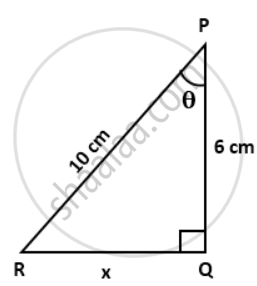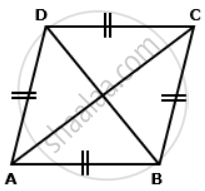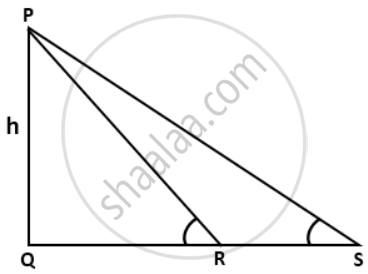Advertisements
Advertisements
प्रश्न
Evaluate the following: `(2sin25° sin35° sec55° sec65°)/(5tan 29° tan45° tan61°) + (3cos20° cos50° cot70° cot40°)/(5tan20° tan50° sin70° sin40°)`
उत्तर
`(2sin25° sin35° sec55° sec65°)/(5tan 29° tan45° tan61°) + (3cos20° cos50° cot70° cot40°)/(5tan20° tan50° sin70° sin40°)`
= `(2sin(90° - 65°) sin(90° - 55°) sec55° sec65°)/(5tan(90° - 61°) xx 1 xx tan61°)`
= `(3cos(90° - 70°) cos(90° - 40°) cot(90° - 20°) cot(90° - 50°))/(5tan20° tan50° sin70° sin40°)`
= `(2cos65° cos55° xx 1/(cos55°) xx 1/(sec65°))/(5cot61° xx 1 xx 1/(cot61°)) + (3sin70° sin40° tan20° tan50°)/(5tan20° tan50° sin70° sin40°)`
= `(2)/(5) + (3)/(5)`
= `(5)/(5)`
= 1.
APPEARS IN
संबंधित प्रश्न
If sin 3A = 1 and 0 < A < 90°, find sin A
If sin α + cosβ = 1 and α= 90°, find the value of 'β'.
If `sqrt(2) = 1.414 and sqrt(3) = 1.732`, find the value of the following correct to two decimal places tan60°
In the given figure, PQ = 6 cm, RQ = x cm and RP = 10 cm, find
a. cosθ
b. sin2θ- cos2θ
c. Use tanθ to find the value of RQ
Find the value of 'x' in each of the following:
Find lengths of diagonals AC and BD. Given AB = 24 cm and ∠BAD = 60°.
In the given figure, if tan θ = `(5)/(13), tan α = (3)/(5)` and RS = 12m, find the value of 'h'.
The perimeter of a rhombus is 100 cm and obtuse angle of it is 120°. Find the lengths of its diagonals.
Evaluate the following: `(sin25° cos43°)/(sin47° cos 65°)`
If tan4θ = cot(θ + 20°), find the value of θ if 4θ is an acute angle.
